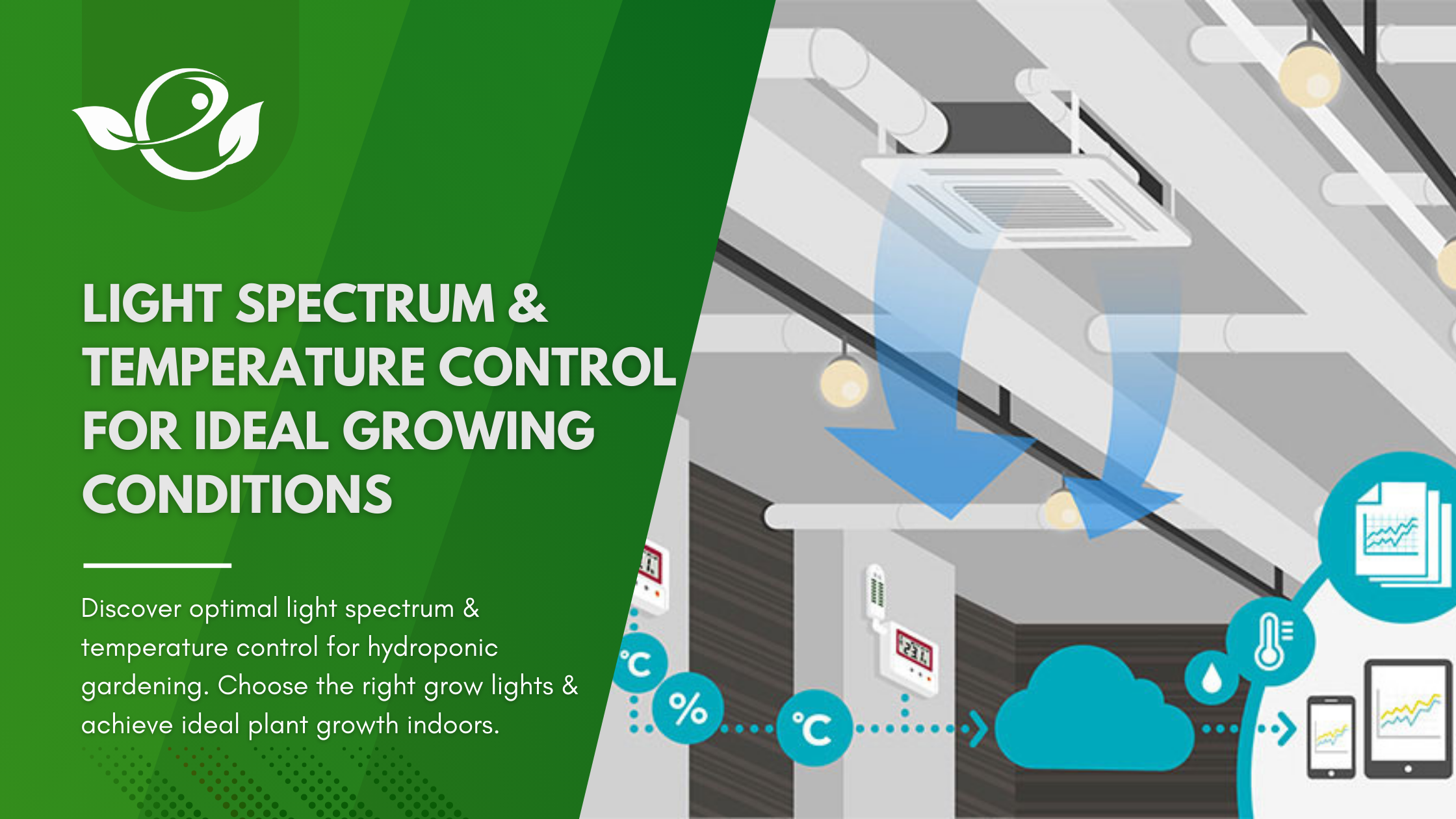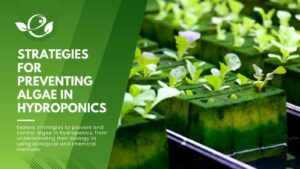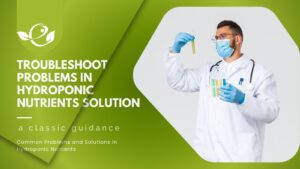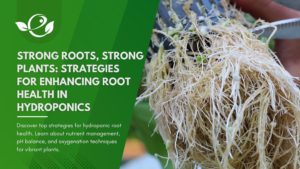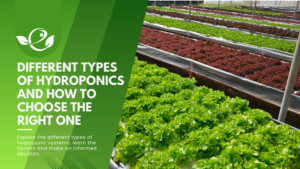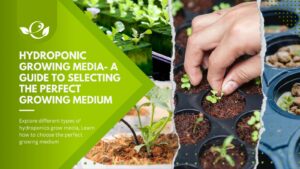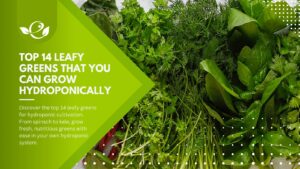Table of Contents
In the realm of hydroponic gardening, achieving optimal plant growth is a delicate dance between two crucial elements: light and temperature. As any seasoned hydroponic enthusiast will attest, mastering the balance between these factors is key to unlocking the full potential of your indoor garden. In this comprehensive guide, we’ll delve into the intricate relationship between light and temperature in hydroponics and explore strategies for creating the perfect harmony between them.
Understanding Light Requirements in Hydroponic Gardening
Types of Light Needed for Plant Growth
- Natural vs. Artificial Light: Plants require light for photosynthesis, the process by which they convert light energy into chemical energy. While natural sunlight provides the full spectrum of light needed for optimal growth, artificial lights can be tailored to meet specific plant requirements. Natural sunlight offers a broad spectrum that includes ultraviolet (UV) and infrared (IR) wavelengths, which can stimulate various physiological processes in plants. On the other hand, artificial lights such as LED and fluorescent lights can be adjusted to emit specific wavelengths tailored to different growth stages or plant types.
- Spectrum Requirements: Different growth stages demand varying light spectrums. Understanding these spectrums is crucial for providing plants with the right light at the right time. For instance, blue light is essential for vegetative growth and root development, while red light promotes flowering and fruiting. Some hydroponic setups utilize full-spectrum LED lights to mimic natural sunlight and provide a balanced spectrum throughout the plant’s lifecycle.
Factors Influencing Light Availability
- Placement of Lights: Proper positioning of grow lights ensures even distribution of light across plants. Hanging lights at the correct height and angle prevents shading and ensures that all plants receive adequate illumination. Additionally, rotating the position of lights or using reflective surfaces can maximize light penetration and efficiency within the grow space.
- Intensity and Duration: Adjusting light intensity and duration according to plant needs is essential for preventing overexposure or underexposure. The light intensity can be regulated by varying the wattage of bulbs or adjusting dimmer settings on LED lights. Similarly, controlling the photoperiod (the duration of light exposure) mimics natural daylight cycles and influences plant growth, flowering, and fruiting.
Popular Lighting Options
- LED Grow Lights: Highly efficient and customizable, LED lights are a favorite among hydroponic growers. LED technology allows growers to fine-tune light spectrums and intensity levels to match specific plant requirements. Additionally, LED lights produce less heat, reducing the risk of temperature fluctuations within the grow space and minimizing energy consumption.
- Fluorescent Lights: Affordable and suitable for smaller setups, fluorescent lights provide adequate light for most hydroponic crops. While they may not offer the same intensity or spectrum customization as LED lights, fluorescent bulbs are an excellent option for beginners or hobbyists looking to start small-scale hydroponic projects.
- High-Pressure Sodium (HPS) Lights: Known for their high output, HPS lights are ideal for fruiting plants that require intense light. HPS bulbs emit a strong red-orange spectrum, which promotes flowering and fruit development. However, they produce more heat than LED or fluorescent lights, requiring additional ventilation or cooling measures to maintain optimal growing conditions.
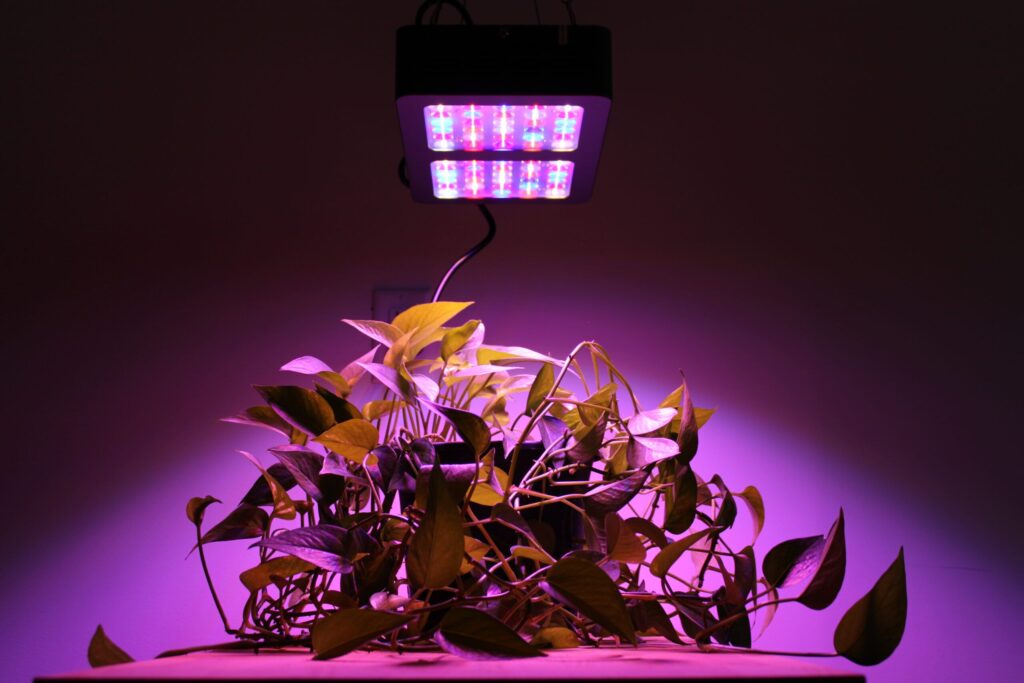

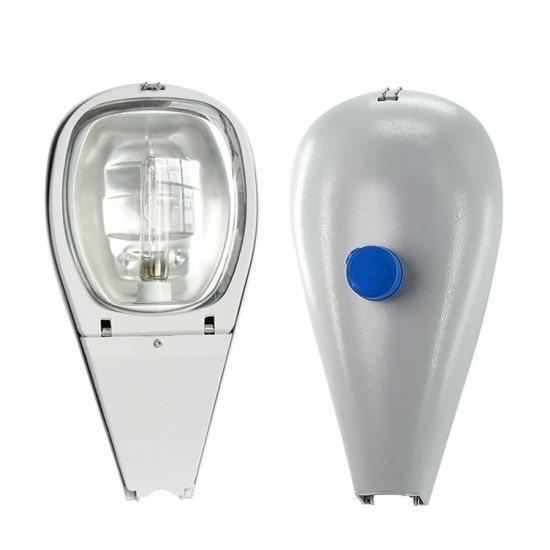
Managing Temperature for Optimal Plant Growth
Importance of Temperature Control
- Effects on Plant Metabolism: Temperature profoundly impacts plant metabolism, influencing growth rates and nutrient uptake. Temperature influences enzyme activity, photosynthesis rates, and respiration rates in plants, ultimately affecting their overall growth and development. Extreme temperatures can inhibit enzyme function and metabolic processes, leading to stunted growth or nutrient deficiencies.
- Impact on Nutrient Uptake: Temperature fluctuations can disrupt nutrient absorption, leading to nutrient deficiencies or toxicities. Temperature affects the solubility and availability of nutrients in hydroponic solutions, influencing how plants absorb essential elements. For example, high temperatures can increase nutrient uptake but also elevate the risk of nutrient imbalances or root rot. Conversely, cold temperatures can slow down nutrient uptake and metabolism, negatively impacting plant growth.
Ideal Temperature Ranges
- Leafy Greens: Typically thrive in temperatures between 65°F to 75°F (18°C to 24°C). Leafy greens such as lettuce, spinach, and kale prefer cooler temperatures to prevent bolting (premature flowering) and bitterness in leaves. Maintaining consistent temperatures within this range promotes healthy leaf development and vibrant colouration.
- Fruiting Plants: Prefer slightly warmer temperatures, ranging from 70°F to 80°F (21°C to 27°C). Fruiting plants like tomatoes, peppers, and cucumbers require warmer conditions to support flower formation, pollination, and fruit set. Providing adequate warmth encourages robust growth, flowering, and the development of high-quality fruits.
- Herbs: Thrive in similar temperatures to leafy greens but may tolerate slightly warmer conditions. Herbs such as basil, parsley, and mint prefer moderate temperatures with ample sunlight to produce aromatic leaves and maintain flavour profiles. However, excessive heat can cause herbs to bolt or lose their essential oils, compromising their quality and flavour.
Methods for Temperature Control
- HVAC Systems: Heating, ventilation, and air conditioning systems provide precise control over temperature levels. HVAC systems regulate temperature and humidity within the grow space, creating an optimal environment for plant growth. Growers can adjust thermostat settings to maintain desired temperatures and ensure consistent conditions throughout the day and night.
- Fans and Ventilation: Circulating air helps maintain uniform temperatures and prevents heat buildup. Fans promote air movement within the grow space, dissipating excess heat and humidity. Proper ventilation also removes stale air and replenishes CO2 levels, supporting photosynthesis and overall plant health.
- Water Chilling and Heating Devices: Submerging roots in temperature-controlled water ensures consistent conditions for plant growth. Water chillers and heaters regulate the temperature of nutrient solutions, preventing fluctuations that can stress plants or disrupt nutrient uptake. By maintaining the ideal temperature range for roots, growers can optimize nutrient absorption and minimize the risk of root diseases.

Achieving Harmony between Light and Temperature
Understanding the Relationship
- Influence of Light on Temperature: Intense light can raise temperatures within grow spaces, necessitating careful temperature management. As plants absorb light energy, they convert it into heat through the process of photosynthesis. Excessive heat buildup can lead to thermal stress, affecting plant metabolism and growth. Therefore, balancing light intensity with temperature control measures is essential for maintaining a stable growing environment.
- Impact of Temperature on Light Efficiency: Extreme temperatures can affect the efficiency and lifespan of grow lights. High temperatures can reduce the efficacy of LED diodes or fluorescent tubes, leading to diminished light output or premature failure. Conversely, cold temperatures can slow down the chemical reactions within bulbs, affecting their performance and longevity. By optimizing temperature levels, growers can prolong the lifespan of grow lights and maximize their effectiveness throughout the growing cycle.
Strategies for Balancing Light and Temperature
- Adjusting Light Intensity: Dimming lights or adjusting their height can mitigate temperature spikes caused by excessive light. By reducing light intensity during the hottest part of the day or adjusting the distance between lights and plants, growers can prevent overheating while still providing adequate illumination. LED grow lights equipped with dimmer controls offer flexibility in adjusting light levels according to plant needs and environmental conditions.
- Utilizing Shading Techniques: Installing shades or curtains can regulate light exposure and prevent overheating. Shading materials such as reflective films or shade cloths can diffuse light intensity and minimize heat stress on plants. The strategic placement of shading devices helps distribute light evenly across the grow space while protecting sensitive crops from excessive sunlight. Additionally, adjustable shading systems allow growers to fine-tune light levels throughout the day to match changing environmental conditions.
- Implementing Temperature Control Measures: Incorporating temperature control devices ensures that light and temperature remain in sync throughout the growing cycle. Automated climate control systems monitor and regulate temperature, humidity, and CO2 levels, providing optimal growing conditions for plants. Growers can program these systems to adjust lighting schedules and temperature setpoints based on specific crop requirements and environmental parameters. By integrating temperature control measures with lighting management strategies, growers can create a harmonious growing environment that maximizes plant health and productivity.
Conclusion
In the dynamic world of hydroponic gardening, achieving harmony between light and temperature is essential for unlocking the full potential of your indoor garden. By understanding the intricate relationship between these two factors and implementing the strategies outlined in this guide, you can create the ideal growing conditions for your hydroponic crops. Remember, consistency and attention to detail are key to cultivating thriving plants and maximizing your yields.
Frequently Asked Questions (FAQs)
1. What is the optimal light spectrum for hydroponic plants?
The optimal light spectrum for hydroponic plants depends on the growth stage and type of plant. Generally, plants require a balance of blue, red, and white light for optimal growth and development. Blue light promotes vegetative growth and root development, while red light stimulates flowering and fruiting.
2. How do I know if my plants are getting enough light?
Monitoring plant growth and observing leaf coloration can help determine if your plants are receiving adequate light. Healthy plants typically exhibit vibrant green foliage, whereas plants receiving insufficient light may appear pale or leggy. Additionally, slow growth or elongated stems may indicate a lack of light. Using a light meter can provide precise measurements of light intensity in your grow space, helping you adjust lighting settings as needed to ensure optimal conditions for plant growth.
3. What are the signs of temperature stress in hydroponic plants?
Temperature stress in hydroponic plants can manifest in various ways, including wilting, leaf discolouration, and stunted growth. High temperatures can cause wilting, leaf curling, and scorched foliage, while low temperatures may lead to slowed growth, yellowing leaves, and root rot.
4. How can I control temperature fluctuations in my hydroponic system?
Controlling temperature fluctuations requires a combination of proper insulation, ventilation, and temperature control devices. Ensure that your grow space is well-insulated to minimize heat loss or gain from external sources. Adequate ventilation helps dissipate excess heat and humidity, while temperature control devices such as HVAC systems, fans, and water chillers/heaters maintain stable temperature levels within the hydroponic system.
5. Can I use natural sunlight for my hydroponic setup?
Yes, natural sunlight can be used for hydroponic setups, especially in outdoor or greenhouse environments. However, it’s essential to consider factors such as sunlight intensity, duration, and seasonal variations. Supplemental artificial lighting may be necessary to provide consistent light levels, especially during cloudy days or winter months when sunlight is limited.
6. How often should I adjust lighting and temperature settings in my hydroponic system?
Lighting and temperature settings should be adjusted based on plant growth stage, environmental conditions, and specific crop requirements. Regular monitoring of light intensity, temperature, and humidity allows growers to make informed decisions and fine-tune settings as needed. During different growth stages, such as vegetative growth, flowering, and fruiting, plants may have varying light and temperature preferences. It’s essential to observe plant responses and adjust settings accordingly to maintain optimal growing conditions and maximize yields.
